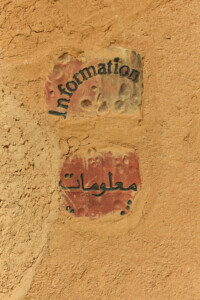How to get there!
Wadi El-Hitan is located about 12 kilometers west of the prominent hill of Garet Gehannam in the Wadi El-Rayan Protected Area (WRPA). To reach Wadi El-Hitan, you will take a 15km unpaved track that requires a 4 Wheel Drive car, crosses treacherous sands and the site itself is extremely desert.
 Things to do
Things to do
- Visit the Open-air Museum and the Fossils and Climate Change Museum
- Go on a Safari
- Camp and Watch the Sunset
- Felucca Ride
- Visit Tunis Village
- Horse and Camel Riding
- Bird Watching Trips
- Visit the Magic Lake
- Panoramic View overlooking the lower lake of Wadi Rayan
- Bedouin dinner
Where to Stay?
There are several hotels, camps and ecolodges in the area. It is recommended that you stay in a place that supports the livelihoods of the local people. Most accommodations in the area are simple and not very luxurious.
Guided Tours
There are several types of guided tours offered by local tour guides in the area. Before coming to the area, do your research and look for the tour that interests you!
Entrance Fees
- Entrance Fee – Wadi El-Rayan Protected Area (Egyptian)
- Entrance Fee -Wadi El-Rayan Protected Area (None-Egyptian)
- Entrance Fee – Wadi Al-Hitan (Egyptian)
- Entrance Fee – Wadi Al-Hitan (None-Egyptian)
- Camping Fee – Wadi Al-Hitan (Egyptian)
- Camping Fee – Wadi Al-Hitan Camping Fee – Wadi Al-Hitan (Egyptian)
- Entrance Fee – The Fossil and Climate Change Museum
- Kids are under 6 years are exempted from all fees
Car Parking
There is car parking in the Wadi El-Hitan site. All visitors should adhere to the parking regulations and should use designated parking areas.
Clothes
While it may be tempting to wear shorts and a T-shirt, choose loose-fitting long-sleeved shirts and pants, a wide-brimmed hat with a closed crown, and sturdy hiking boots. This protects you from the sun’s rays and allows air to circulate, helping keep you cool. Always bring a jacket or sweater for warmth in case you’re caught in the desert at night.
Drinking water
Desert regions receive, on average, less than 10 inches of rainfall a year, and this is sporadic at best. Water sources are scarce and often polluted or brackish because of their high mineral content. Without water, you become dehydrated, and your body systems break down. Bring, at minimum, one gallon of water per person per day on desert trips. Don’t wait until you feel thirsty to drink. Your body needs water before your thirst center kicks in.
Visitor Facilities
Wadi El-Hitan site is well-managed by Park Rangers. The site provides very interesting visitor facilities that were designed and built to blind with and respect nature. The visitors must visit the Open-air Museum and indoor museum (Fossils and Climate Change Museum) that displays hundreds of historical and archaeological remains of fossils and provides information and education about the area.
Park Regulations
We invite you to surf our website, learn about the Wadi El-Rayan Protected Area and Wadi El-Hitan (Valley of Whales), take a Virtual Tour, check our Online Library, plan your visit as we look forward to seeing you in person soon in our park!
Please respect nature and get familiar with the Park Rules and Regulations. More information about the site can be found in the Park Brochure.
